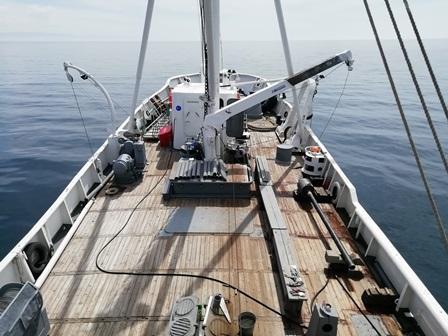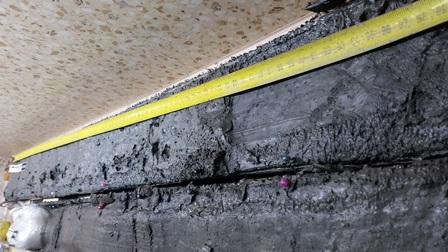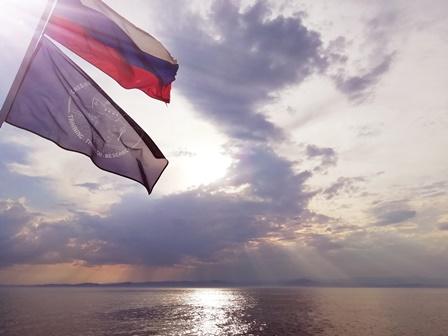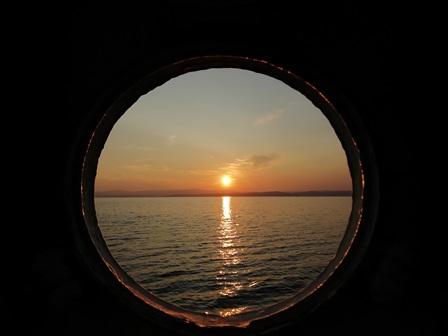3 July. Day 11. Novosibirsk MV again…..and MSU, again
We are determined to investigate the area around Novosibirsk MV with multiple profiles. Our profile today is located to the south of the MV. All our cores show evidence of gas content in the sediments, even those collected more than a kilometre away from the Gydratny fault. The sediments revealed active subvertical degassing conduits and blisters indicating that the whole area is a pathway for gas discharge.

We completed our profile earlier than expected. We are a superfast team! Therefore, we decided to visit again the MSU structure (less than 1 hr sailing) and try to collect more gas hydrates. All the cores showed very high gas content. This large structure is definitely very active, and is most probably also a mud volcano. During one of the attempts, we had a double hit of the corer and the result showed really clearly a sharp difference between the gas charged sediments and the topmost layers with less gas content. The former within minutes inflated and became foamy due to the gas expansion; the later remained more or less flat creating a curious step effect between the sediments in contact on the split core section.

We are finally done. We conclude the day with the 100th coring station during Class@Baikal 2019. This is a record score for sampling stations within all six years of Class@Baikal program. Thank you all for the great work!

Tonight Vasily presented his research of petrography of volcanic rocks from Kamchatka peninsula.

--
Text: Adriano and team
Photo: Marina and team